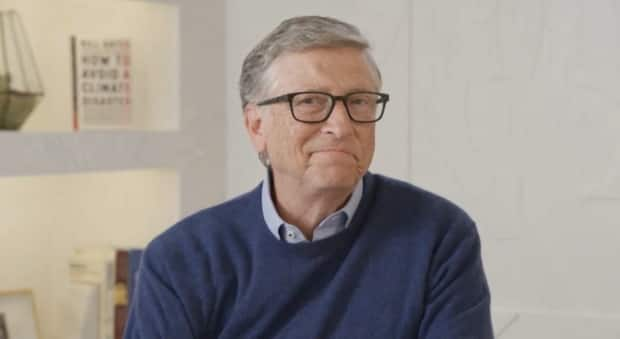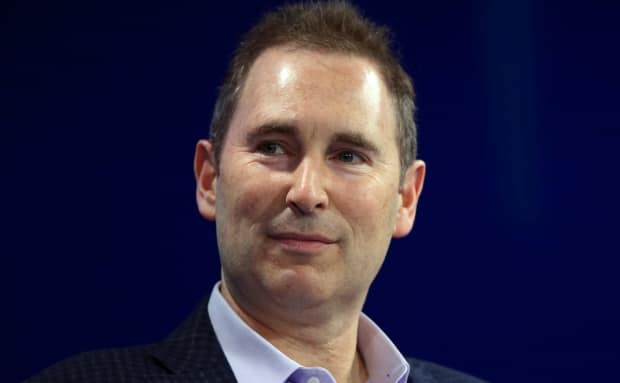OPINION | Oil sector charts new course amidst energy transition

This column is an opinion piece from Deborah Yedlin, a long-time CBC Calgary contributor who has worked as a columnist for both the Calgary Herald and the Globe and Mail and is the chancellor of the University of Calgary.
If there was one indication of how dramatically the energy landscape has changed in the last two years, it was the opening session at the annual CERAWeek conference hosted by IHS Markit this week.
It featured a conversation between Pulitzer Prize-winning author and IHS vice-chairman Dan Yergin and Microsoft founder Bill Gates, each with newly published books. Yergin's The New Map was published in December, and Gates's book, How to Avoid a Climate Disaster, was released last month.
In conferences past, CERAWeek would have started with a presentation by the International Energy Agency's Fatih Birol on energy market fundamentals, followed by a session featuring Yergin in conversation with the chief executive officer of a major energy company.
This year, conference attendees — online after the event was cancelled in 2020 — were treated to a very frank discussion about energy, climate change and the role technology and innovation will play as the world looks to transform existing energy systems and address climate change.
Gates has had a front-row seat to some of the innovation taking place in the energy space, through his Breakthrough Energy fund established in 2015 that includes a "who's who" of investors from around the globe.

A conversation focused on climate change and how to reduce emissions to kick off CERAWeek is an important signpost, because the conference has been, foremost, about non-renewable energy sources and the associated market dynamics. It has focused on supply, demand, market share, geopolitics and price. Yet the sessions on both Monday and Tuesday this week indicate an inflection point has taken place since 2019.
Forget the "if" of the energy transition. It's here.
Even as oil prices are expected to rise in the coming months — the result of increased demand when economies are allowed to open — there is no mistaking the laser focus on the imperative to decrease emissions.
There has yet to be a session where an aspect of ESG (environment, social and governance) has not been raised or discussed to varying degrees.
The cynic might say the industry is paying attention because the consequences of not doing anything ranges from a higher cost of capital to the prospect of stranded assets. But there's more going on than simply ticking a box; companies are changing business practices and risking capital to invest in new technologies that decrease the environmental impact of what they produce.
While the industry has always looked for ways to increase efficiency, what's different now is that the sector — from Europe to the Middle East and North and South America — is collectively focused on being in the energy transition game and not watching from the sidelines.
And this is being approached through partnerships and collaborations, with the new economy companies in full view.
"It will take more than one company to fix the environment … we have to work together … it can't be one country or one sector," said Andy Jassy, chief executive officer of Amazon Web Services and incoming Amazon CEO.
Amazon has partnered with energy giant BP on its data analysis and architecture.

Even as renewables, electrification and the adoption of electric vehicles will affect the energy mix, all demand forecasts show the energy-dense hydrocarbon molecule isn't about to disappear. The pandemic has shown the correlation between economic activity and oil prices. As United Airline's CEO Scott Kirby pointed out, there simply isn't a substitute.
For a sector that has long been criticized for not investing enough in research and development and new technologies, the industry is making up for lost time.
U.S.-based Occidental Petroleum (as well as Gates) has invested in Squamish, B.C.-based Carbon Engineering, which is developing direct air capture technology. Chevron, in addition to recently launching its second Future Energy Fund, is partnering with dairy farms in California to capture the waste and use it to produce renewable natural gas. Amazon has a $2 billion US fund to support companies active in the renewable space.
There have been discussions about carbon pricing, with many highlighting the potential and scalability of carbon capture and storage (CCS) and CCUS (carbon capture usage and storage), including Shell's Ben Van Beurden pointing to the success of the Quest CCS project at Fort Saskatchewan leading to other initiatives.
Other emissions-reducing options have included renewables, the role of small module nuclear reactors, the importance of data and the potential for hydrogen as a fuel source.

"That's jump ball right now," said John Kerry, U.S. special presidential envoy for climate, in conversation with former U.S. Energy Secretary Ernest Moniz on Tuesday morning, referring to the opportunity presented by hydrogen and characterizing the energy transition as the biggest transformation since the Industrial Revolution.
But there was one story on Tuesday that cast the energy sector in a completely different light — and squarely into the realm of what is possible.
Last January, Occidental, in partnership with Australia's Macquarie Group, delivered two million barrels of oil to a refinery in India, owned by Reliance Industries.
The barrels were carbon neutral. The emissions associated with production, transportation and end-use were entirely offset by CCS and other accredited offset and greenhouse gas reduction mechanisms. Occidental's CEO, Vicki Holub, called this a step to transforming the company from an energy company to a carbon management company.
This arguably validates the narrative — from industry leaders and, yes, politicians — that the road to decarbonization will involve oil and gas companies, which BP's CEO Bernard Looney admitted was counterintuitive.
It also fits entirely with Gates's assessment that the energy sector is more "high tech than red neck" and that the skill sets and ability to work at scale and execute complex projects are perfectly suited to ensuring a successful energy transition.
To borrow from the title of Yergin's new book, maps provide directions to destinations unknown. Judging from the conversations from the first two days of CERAWeek 2021, the destination has been defined as net zero — but the directions to get there remain a work in progress.
This column is an opinion. For more information about our commentary section, please read our FAQ.
